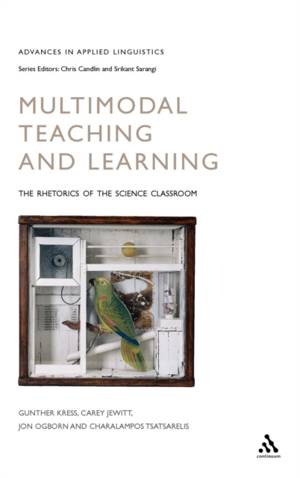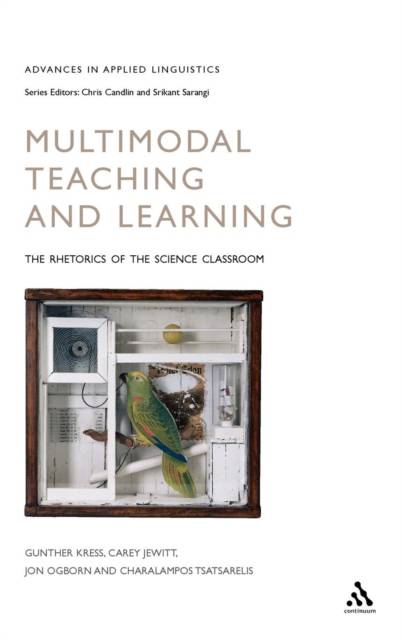
Bedankt voor het vertrouwen het afgelopen jaar! Om jou te bedanken bieden we GRATIS verzending (in België) aan op alles gedurende de hele maand januari.
- Afhalen na 1 uur in een winkel met voorraad
- In januari gratis thuislevering in België
- Ruim aanbod met 7 miljoen producten
Bedankt voor het vertrouwen het afgelopen jaar! Om jou te bedanken bieden we GRATIS verzending (in België) aan op alles gedurende de hele maand januari.
- Afhalen na 1 uur in een winkel met voorraad
- In januari gratis thuislevering in België
- Ruim aanbod met 7 miljoen producten
Zoeken
Multimodal Teaching and Learning
The Rhetorics of the Science Classroom
Gunther Kress, Carey Jewitt, Jon Ogborn
€ 339,45
+ 678 punten
Uitvoering
Omschrijving
'Multimodal Teaching and Learning: The Rhetorics of the Science Classroom achieves the rare goal of explicating multimodality as both theory and practice. This is an importantly concrete analysis, derived from extended, careful, and interdisciplinary observation, which challenges our thinking about how meaning and knowledge are shaped by our modes of communication. The book appeals to a wide range of scholars and practitioners far beyond the science classroom.' Professor Ron Scollon, Department of Linguistics, Georgetown University. This book takes a radically different look at communication, and in doing so presents a series of challenges to accepted views on language, on communication, on teaching and, above all, on learning. Drawing on extensive research in science classrooms, it presents a view of communication in which language is not necessarily communication - image, gesture, speech, writing, models, spatial and bodily codes. The action of students in learning is radically rethought: all participants in communication are seen as active transformers of the meaning resources around them, and this approach opens a new window on the processes of learning.
Specificaties
Betrokkenen
- Auteur(s):
- Uitgeverij:
Inhoud
- Aantal bladzijden:
- 208
- Taal:
- Engels
- Reeks:
Eigenschappen
- Productcode (EAN):
- 9780826448590
- Verschijningsdatum:
- 12/11/2001
- Uitvoering:
- Hardcover
- Formaat:
- Genaaid
- Afmetingen:
- 163 mm x 243 mm
- Gewicht:
- 471 g

Alleen bij Standaard Boekhandel
+ 678 punten op je klantenkaart van Standaard Boekhandel
Beoordelingen
We publiceren alleen reviews die voldoen aan de voorwaarden voor reviews. Bekijk onze voorwaarden voor reviews.









